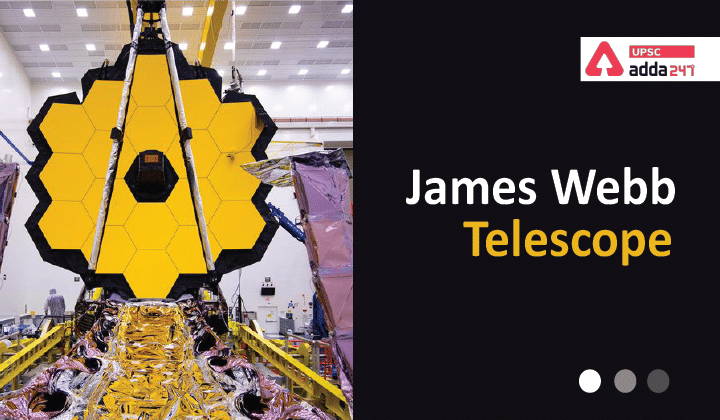Table of Contents
James Webb Telescope: Relevance
- GS 3: Awareness in the fields of IT, Space, Computers, robotics, Nano-technology, bio-technology and issues relating to intellectual property rights.
James Webb Telescope: Context
- NASA has recently launched the largest-ever space telescope by the Ariane 5 rocket from European Space Agency’s Spaceport in French Guiana, South America.
James Webb Telescope: Key points
- It is a joint project of the National Aeronautics and Space Administration (NASA), ESA (European Space Agency) and the Canadian Space Agency (CSA).
- It is an infrared telescope, and being adjudged as the successor of the Hubble Space Telescope and the Spitzer Space Telescope.
- It is also said to be the most powerful space telescope ever built.
- JWST will be positioned much deeper into the space, at a spot known as L2.
- L2 is one of the five points, known as Lagrange’s points, in any revolving two-body system like Earth and Sun, where the gravitational forces of the two large bodies cancel each other out.
- Objects placed at these points are relatively stable and require minimal external energy to keep themselves there.
- L2 is a position directly behind Earth in the line joining the Sun and the Earth.
- It would be shielded from the Sun by the Earth as it goes around the Sun, in sync with the Earth.
James Webb Telescope: Significance
- It is expected to unveil many secrets of the universe, particularly those related to the formation of stars and galaxies in the early period after the Big Bang.
- Time machine: These telescopes are also known as time machine of space due to their ability to see very faraway objects.
- The images of stars and galaxies shown by the telescope are images of stars or galaxies as they were millions of years ago.
- It is because the light coming from those objects, stars or galaxies, which is captured by these telescopes, began its journey millions of years earlier.
- The images sent by Hubble form the basis for much of our present-day understanding of the early universe and the formation and destruction of planets, stars and galaxies.
- James Webb Telescope has the ability to look in the infrared spectrum, which will allow it to peer through much deeper into the universe, and see-through obstructions like gas clouds.
JWST functions
- Infrared camera will take images of astronomical objects
- Spectrometers will break the incoming infrared light into different colours for analysis.
Also Read:





 TSPSC Group 1 Question Paper 2024, Downl...
TSPSC Group 1 Question Paper 2024, Downl...
 TSPSC Group 1 Answer key 2024 Out, Downl...
TSPSC Group 1 Answer key 2024 Out, Downl...
 UPSC Prelims 2024 Question Paper, Downlo...
UPSC Prelims 2024 Question Paper, Downlo...
